Physical Environment
 At the Community Conversation, 78% of the participants disagreed with the statement, “Kāne'ohe has a physical environment that supports physical and mental health behaviors”. Kāne'ohe is a lush, green suburb of Honolulu that offers residents places to live, work, and play. There are numerous parks throughout the community from small neighborhood parks offering walking and socializing opportunities to the large Kāne'ohe District park that provide many indoor and outdoor activities with a gymnasium, swimming pool, courts, and sports fields. These attributes allow residents to play, socialize, and participate in physical exercise. Many outdoor spaces are also available at the schools such as Castle High’s track (although limited hours) and He'eia Elementary School which has basketball courts for children to play on after school hours. People often jog at the State Veteran’s Cemetery while many seniors utilize Windward Mall for safe exercise that is also sheltered from frequent rain.
At the Community Conversation, 78% of the participants disagreed with the statement, “Kāne'ohe has a physical environment that supports physical and mental health behaviors”. Kāne'ohe is a lush, green suburb of Honolulu that offers residents places to live, work, and play. There are numerous parks throughout the community from small neighborhood parks offering walking and socializing opportunities to the large Kāne'ohe District park that provide many indoor and outdoor activities with a gymnasium, swimming pool, courts, and sports fields. These attributes allow residents to play, socialize, and participate in physical exercise. Many outdoor spaces are also available at the schools such as Castle High’s track (although limited hours) and He'eia Elementary School which has basketball courts for children to play on after school hours. People often jog at the State Veteran’s Cemetery while many seniors utilize Windward Mall for safe exercise that is also sheltered from frequent rain.
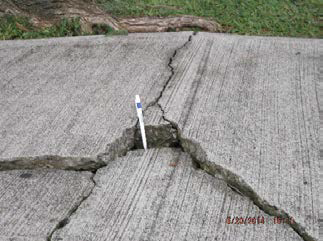 However, there were many concerns about the conditions of current or nonexistent infrastructure such as sidewalks, crosswalks, parks, bus stops, public toilets, storm drains, median strips, and overpasses. Public outdoor areas such as streams, bridges, median strips, and drainage ditches need more attention to make Kāne'ohe a beautiful, inviting place for all to live. Although some parks were maintained well, others could use more attention. People would like places to sit to rest, relax, and/or watch children play. More restrooms are needed.
However, there were many concerns about the conditions of current or nonexistent infrastructure such as sidewalks, crosswalks, parks, bus stops, public toilets, storm drains, median strips, and overpasses. Public outdoor areas such as streams, bridges, median strips, and drainage ditches need more attention to make Kāne'ohe a beautiful, inviting place for all to live. Although some parks were maintained well, others could use more attention. People would like places to sit to rest, relax, and/or watch children play. More restrooms are needed.
When asked about the statement, “In Kāne'ohe, people of all ages have access to various forms of transportation”, 70% of the participants disagreed. Walkability is a form of transportation that was prominently highlighted both in photos and ensuing conversations. Frequently mentioned were sidewalks that were often too narrow (for wheelchairs, walkers, strollers), uneven or cracked, (unsafe and hazardous), deficient (sudden ending although path continues, need for sidewalks on one or both sides of the street), needing maintenance (rubbish, branches, cracks and uneven levels from tree roots), and obstructions (utility poles, trees, and plants).
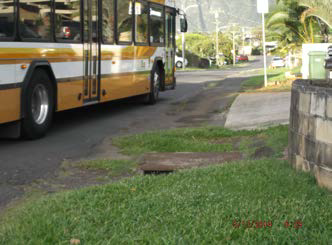 Many older adults depend on TheBus for providing transportation to activities. Often this limits their activities as the service doesn’t go into most neighborhoods. It’s difficult for an older person to walk a mile to catch TheBus on a main road; feeder buses are needed. TheBus loading/unloading areas could be improved to provide a clear, safe passage for entering/exiting passengers.
Many older adults depend on TheBus for providing transportation to activities. Often this limits their activities as the service doesn’t go into most neighborhoods. It’s difficult for an older person to walk a mile to catch TheBus on a main road; feeder buses are needed. TheBus loading/unloading areas could be improved to provide a clear, safe passage for entering/exiting passengers.
Some people are unable to utilize the Handi-van due to eligibility restrictions. Inexpensive alternatives are needed, including door to door options. When a person gets older and is unable to drive, they must rely on other people, use a taxi or Uber.
 Vehicle traffic was also a major issue that affected people’s ability to get to desired locations and in a timely manner. Over a dozen intersections/locations were stated problematic with numerous corrective suggestions offered such as adding stop signs, left turn signals/lanes, traffic lights (or adjusting timing of existing ones); removing sight barriers (trees, bushes, etc.); adding pedestrian walkways, bike lanes, etc. People mentioned that road conditions need improvement (bumpy, potholes, storm drains, etc.).
Vehicle traffic was also a major issue that affected people’s ability to get to desired locations and in a timely manner. Over a dozen intersections/locations were stated problematic with numerous corrective suggestions offered such as adding stop signs, left turn signals/lanes, traffic lights (or adjusting timing of existing ones); removing sight barriers (trees, bushes, etc.); adding pedestrian walkways, bike lanes, etc. People mentioned that road conditions need improvement (bumpy, potholes, storm drains, etc.).
Overwhelmingly, all participants (100%) disagreed with the statement, “Outdoor spaces and building design in Kāne'ohe support mobility and independence”. Many unsafe crosswalks were discussed in detail, including a crossing in front of Mui Kwai Chop Suey and Kāne'ohe Market (mentioned more than 10 times) and Pahia Road & Kamehameha Highway. It was felt that Kamehameha Highway needed more crosswalks between traffic lights and other specific locations as well. It was suggested that providing better marking (such as flags) might help drivers with recognizing pedestrians walking across the streets. On a positive note, the flashing lights for pedestrians on Kamehameha Highway fronting Hawai'i Pacific University was mentioned as a good start towards improving pedestrian safety.
 Criticisms were expressed regarding buildings and spaces that hindered mobility. The Kāne'ohe Library was mentioned as an example of poor design and accessibility. There are many stairs with no ramp or handicap access; its roadway needs paving and there is only one handicap parking stall.
Criticisms were expressed regarding buildings and spaces that hindered mobility. The Kāne'ohe Library was mentioned as an example of poor design and accessibility. There are many stairs with no ramp or handicap access; its roadway needs paving and there is only one handicap parking stall.
In Kāne'ohe, limited parking makes entree to various locations difficult. People are forced to park on the grass/curb. Often parking stalls that do exist are too narrow for people who use wheelchairs/carseats/strollers to even enter/exit car doors.
Two major overpass bridges were discussed. The bridge by the Kokokahi YWCA is not easy to use for people with limited mobility. There are many stairs which make it difficult to navigate and overhanging trees without regular care increase rubbish and slipping. On the other hand, the overpass fronting Kāne'ohe Elementary School is wide and has a handicap ramp that is easy to use for people of all ages. There is also a bus stop nearby. Yet, there is much apprehension to use it because views of activities are hidden from sight so that children and seniors are afraid.
The majority of participants (80%) disagreed with the statement, “All Kāne'ohe residents have access to affordable, accessible housing options”. People were worried about the ability to age in place and there are few options for affordable communal living facilities for older adults. It was emphasized that people on fixed incomes are unable to pay for the existing private facilities.
It is also expensive in the community for younger adults who need housing. If more affordable housing can’t be built, people will be forced to squeeze into multi-generational living in existing structures which would require ‘Ohana-type’ zoning and improved City infrastructure.
Homelessness was mentioned in many sections of the discussion. It affects the lives of these individuals and families beyond imagination. Their situation has impacted the general public as well as the use and accessibility of public parks, TheBus stops, libraries, and restrooms were cited. Many parks now have regular homeless who may also engage in illegal activities. Highly visible laundry is hung over fences and railings which prevent others (such as youth sports teams) from utilizing the facilities including restrooms. TheBus shelters and Library have become unexpected hosts to homeless for much of their belongings and use of facilities.
Social & Cultural Environment
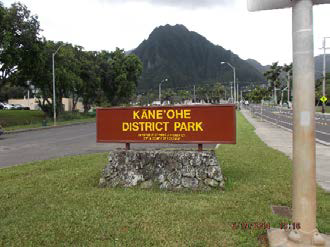 All participants (100%) agreed with the statement, “Kāne'ohe supports active involvement, social and cultural participation, and intergenerational connectivity among all residents”. Kāne'ohe has a wealth of assets that support social and cultural activities. These include numerous parks (Kāne'ohe District Park, Kāne'ohe Community & Senior Center, Kāne'ohe Beach Park, Ho'omaluhia Botanical Gardens, etc.) and access to the Kāne'ohe Bay (such as Kāne'ohe Beach Park, He'eia Pier, Kokokahi YWCA, Kāne'ohe Yacht Club). A large multi-purpose facility such as the Kāne'ohe District Park provides many activities for children and adults with courts, swimming pool, classes, athletic fields, etc. In addition there are many other places where people gather for social, educational, cultural, and/or religious activities such as Kāne'ohe Community Garden, Hawai'i State Veteran’s Cemetery, Kāne'ohe Higashi Hongwanji Buddhist Church, Kokokahi YWCA, Bay View Golf Course, Windward Mall, Kāne'ohe Library, and Zippy’s.
All participants (100%) agreed with the statement, “Kāne'ohe supports active involvement, social and cultural participation, and intergenerational connectivity among all residents”. Kāne'ohe has a wealth of assets that support social and cultural activities. These include numerous parks (Kāne'ohe District Park, Kāne'ohe Community & Senior Center, Kāne'ohe Beach Park, Ho'omaluhia Botanical Gardens, etc.) and access to the Kāne'ohe Bay (such as Kāne'ohe Beach Park, He'eia Pier, Kokokahi YWCA, Kāne'ohe Yacht Club). A large multi-purpose facility such as the Kāne'ohe District Park provides many activities for children and adults with courts, swimming pool, classes, athletic fields, etc. In addition there are many other places where people gather for social, educational, cultural, and/or religious activities such as Kāne'ohe Community Garden, Hawai'i State Veteran’s Cemetery, Kāne'ohe Higashi Hongwanji Buddhist Church, Kokokahi YWCA, Bay View Golf Course, Windward Mall, Kāne'ohe Library, and Zippy’s.
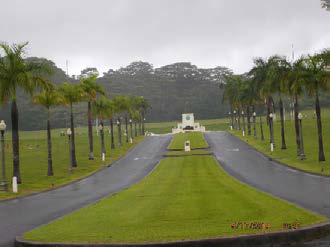 The majority of participants (89%) agreed with the statement, “People in Kāne'ohe have access to social networks and social participation”. People felt that Kāne'ohe is a relatively safe place to live, work, and play compared to other locations. There also seems to be many opportunities to be involved and engaged in activities in this community.
The majority of participants (89%) agreed with the statement, “People in Kāne'ohe have access to social networks and social participation”. People felt that Kāne'ohe is a relatively safe place to live, work, and play compared to other locations. There also seems to be many opportunities to be involved and engaged in activities in this community.
To improve Kāne'ohe, a dog park and/or an outdoor café were suggested. People would like to have tables and chairs at various public/private facilities (parks, malls, etc.) so that they can eat, talk story, and/or watch children play. It was suggested that perhaps civic clubs which could assist in this endeavor (i.e., build chairs and benches).
People were concerned that there may be many seniors living alone. They may not participate in social/cultural activities due to the lack of transportation. They may be also wary of personal safety. An idea that participants suggested for small areas, was to create a Neighborhood Watch. This might increase safety, mobilize people to get to know their neighborhood, and offer social interaction.
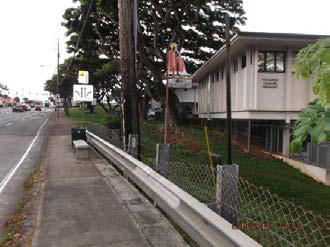 78% of the participants agreed with the statement, “Kāne'ohe residents have opportunities to contribute their skills, knowledge, and time to support the economic prosperity”. There are many businesses, services, and other types of organizations or agencies which provide job opportunities in Kāne'ohe such as financial institutions, health care, retail, community agencies, educational institutions. However, it was felt that there should be more options for younger people as well as older adults. It was noted that the unemployment office closed recently. Although numerous volunteer opportunities were available, it was stated that people need paid employment to survive.
78% of the participants agreed with the statement, “Kāne'ohe residents have opportunities to contribute their skills, knowledge, and time to support the economic prosperity”. There are many businesses, services, and other types of organizations or agencies which provide job opportunities in Kāne'ohe such as financial institutions, health care, retail, community agencies, educational institutions. However, it was felt that there should be more options for younger people as well as older adults. It was noted that the unemployment office closed recently. Although numerous volunteer opportunities were available, it was stated that people need paid employment to survive.
Participants became aware that civic participation and concerns may be submitted in writing to the Kāne'ohe Neighborhood Board. Although everything costs money, people felt that perhaps there are some ideas that can be done by civic or community groups as a service project quickly instead of waiting for approvals, money, or other people to do it for Kāne'ohe.
Service Environment
The participants were split 50% agreed and 50% disagreed with the statement, “People in Kāne'ohe are well-informed and are able to obtain relevant information on programs and services in the community”. There are some forms of communication that seemed to work well for the general public or specific groups. This included: The Midweek (free to every household), the daily newspaper, school bulletin boards, bulletin boards inside of buildings, banners, and newsletters. Other possible venues such as Yellow Pages, social media, electronic boards (e.g., in shopping centers), posters, and emails were identified.
However, people do not seem to know about what resources are available or what activities take place in Kāne'ohe. Some residents are commuters to Honolulu or other locations with little time or energy to become knowledgeable or participate in the community in which they live.
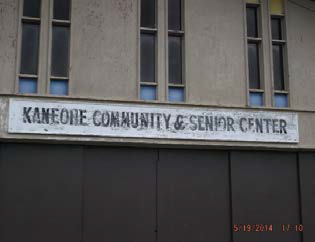 It was felt that an effective communication system is needed. There were residents at the meeting who didn’t know about the special annual events (Bluegrass Festival), well-established programs (Kāne'ohe Community & Senior Center), existing activities (Kāne'ohe Community Garden), and/or available social services (e.g., abuse shelters). People wondered whether a website would be possible or adequate to serve as a source of community information or could neighborhood centers in central areas be a place for dissemination. They were concerned about how seniors living alone would be informed. Currently, one small area in Kāne'ohe established a social network; the Kāne'ohe Neighborhood Board has a website blog.
It was felt that an effective communication system is needed. There were residents at the meeting who didn’t know about the special annual events (Bluegrass Festival), well-established programs (Kāne'ohe Community & Senior Center), existing activities (Kāne'ohe Community Garden), and/or available social services (e.g., abuse shelters). People wondered whether a website would be possible or adequate to serve as a source of community information or could neighborhood centers in central areas be a place for dissemination. They were concerned about how seniors living alone would be informed. Currently, one small area in Kāne'ohe established a social network; the Kāne'ohe Neighborhood Board has a website blog.
Everyone needs to know about disaster preparedness. The Kāne'ohe Neighborhood Board has an emergency preparedness committee working on this issue, but how do they inform individual residents when something does happen?
Most of the participants (75%) agreed with the statement, “In Kāne'ohe, community supports and services (including health services) are available and accessible to all residents”. There are many community resources in Kāne'ohe. These offered services that are educational (Schools, Kāne'ohe Library), recreational (Kāne'ohe Community & Senior Center, Ho'omaluhia Botanical Gardens, YWCA), government (Civic Center, Court House, State Veteran’s Cemetery, fire station, police station), religious, or business (retail centers/malls), etc. Several had more than one purpose such as Windward Community College which offers classes for all ages and subjects, theatre, library, community events, etc.
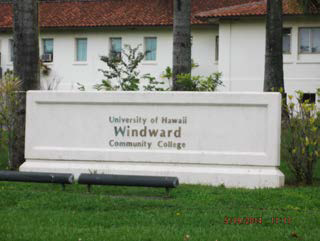 Additionally, there are a multitude of health care ventures. These included clinics, urgent care, hospitals, care homes, private businesses (CVS Minute Clinic, Castle Medical Center, Straub, Kaiser, Windward Comprehensive Health Center, Windward Dialysis, Ann Pearl Care Home, Pohai Nani, etc.).
Additionally, there are a multitude of health care ventures. These included clinics, urgent care, hospitals, care homes, private businesses (CVS Minute Clinic, Castle Medical Center, Straub, Kaiser, Windward Comprehensive Health Center, Windward Dialysis, Ann Pearl Care Home, Pohai Nani, etc.).
Suggestions for improving community supports were discussed. It was proposed that educational supports for Kāne'ohe could be improved by making pre-school to high school programs available and affordable for all socio-economic levels. It was thought that expanding Windward Community College to a full bachelor’s degree program would also beneficial. In the health care area, people felt that a full array of medical services in one location (such as the caliber of Queen’s Hospital) may enhance optimal healthcare.
What are the Priorities in Creating an Age-Friendly Kāne'ohe?
As a suburb with amenities scattered through-out the community, transportation seems to be a primary concern. It influences people’s ability to utilize every age-friendly categories (physical, social, and service environments) and was mentioned in all as a priority during the group discussion. Traffic also prevents people from getting to their destinations in a timely, non-stressful frame of mind and it can hinder their desire to go out and be active in the community. People cannot access physical, social or services without reliable, accessible forms of transportation. Accessibility needs to be available in various forms according to a person’s individual situation with alternative options available at low cost.
I. Physical Environment
- More affordable housing
- Outdoor spaces with tables/chairs that are protected from rain and sun; clean indoor and outdoor restrooms
- Improved transportation
- More accessible transportation alternatives
- Improved traffic navigation
- Improved the condition of current sidewalks and create new ones where none exist for safety and walkability
- wider parking stalls to allow people to enter/egress vehicles
II. Social Environment
- Age appropriate facilities and activities
- Safe places
- Affordable environment
- Reliable door to door transportation
III. Service Environment
- Improved communication system with central locations
- Strong neighborhoods and networks
- Better employment opportunities
- Full service medical services
- Enhanced education opportunities
- Variety of transportation options
Acknowledgements
A special thanks to the City & County of Honolulu Department of Parks & Recreation Kāne'ohe Complex, Community Works in 96744, and the Parents & Children Together Kāne'ohe Community Family Center for co-sponsoring all the Kāne'ohe CFL events and to Cynthia Okazaki, Manager of the Parents & Children Together Kāne'ohe Community Family Center as well as Shari Ah Yat, Director for the Kāne'ohe Community & Senior Center for their assistance. We also would like to thank the following people for their contributions: MAPPers (Davilyn Ching, Leona Ching, Bertha Fong, Bobbie Joseph, Janice Lai, David Lee, Dyson Lee, Henry Lee, Melany Melakea, Michelle Murakami, Cynthia Okazaki, Yvonne Perreira, Patricia Santos, Bill Sager, Sandra Taga, and Eleanor Tokunaga) and Tennye Cabrera; Deborah John of the Oregon State University Extension Service for sharing engAGE in Communities project as well as providing training and technical assistance to develop HI-CFL.
References
Encyclopaedia Britannica. Encyclopaedia Britannica Online Academic Edition. Encyclopædia Britannica Inc. (2014). Kāne'ohe. Retrieved Sept. 23 2014 from http://www.britannica.com/EBchecked/topic/310998/Kāne'ohe,
John, D.H. & Gunter, K. (2012). engAGE in Community, Northwest Public Health, 29, 10-11.
John, D.H., Gunter, K.B., Etuk, L., & Trost, K.K. (2012). GROW Healthy Kids and Communities HEAL MAPPS™ Toolkit Manual. Corvallis, OR: Oregon State University.
Kāne'ohe Business Group. Kāne'ohe History. Retrieved Sept. 23, 2014 from http://www.Kāne'ohebusinessgroup.com/about/Kāne'ohe
U.S. Census (2010). 2010 Census Demographic Profile: Oahu Census Tract. Retrieved July 31, 2014 from http://census.hawaii.gov/Census_2010/demographic/demo_profile_ct_Oahu/
Wikipedia, the free encyclopedia. Kāne'ohe, Hawai'i. Retrieved from Sept. 23, 2014, http://en.wikipedia.org/wiki/Kāne'ohe,_Hawai'i
World Health Organization (2007) GlobalAge-Friendly Cities: A Guide
World Health Organization (2007) Checklist of Essential Features of Age-Friendly Cities
Download this report